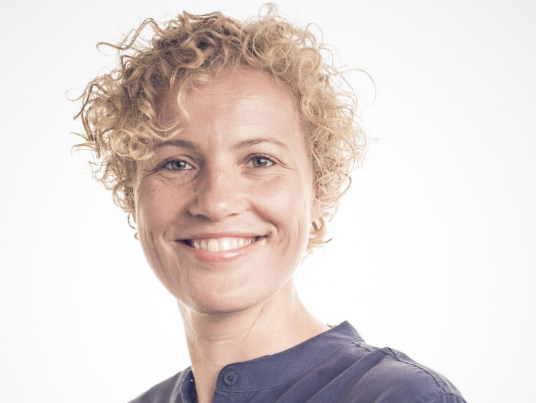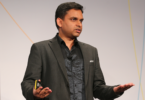Ilona Dzierzanowska is ING France’s Chief Operating Officer. She recently spoke to the Innovator about the bank’s digital transformation.
Q: When did ING start its digital transformation?
ID: When we launched ING Direct — the concept of a digital bank with no branches — about 20 years ago, this was a fintech type innovation, it completely shook the local markets. Then, in the last five years there has been an explosion of innovation, of changing the way we work together across geographies.
Q: Where are you in the process?
ID: Today the world is changing so much. There are new players every day so if I were to tell you ‘I think we are half way through’ maybe tomorrow that answer would not be relevant anymore. ING is a front-runner compared to other banks but we don’t want to be compared to other banks. What we really want to do is measure ourselves against the digital disruptors because they are really the ones determining new business models and ways of servicing customers. Today we are working with many fintechs, experimenting with new types of products and processes.
Q: Can you give some examples of fintech partnerships?
ID: Today we have initiated 115 fintech strategic partnerships and investments globally. For example, ING has cooperated with six startups, including Kabbage and Budget Insight, to develop a 100% digital and instant SME-lending service. It was first launched in Spain in 2016 and has recently been launched in France under the name “Pret Pro Direct.” ING answers a loan request within 10 minutes and funds are available within 48 hours if the request is accepted. Another example is Yolt, an aggregator fully developed in-house by ING. It is available on iOS and Android in the UK and has already integrated 29 banks. A few weeks ago Yolt integrated Starling Bank (a bank launched by a fintech). This is an example of how we sometimes disrupt our own business.
Q: What about your own in-house innovation?
ID: We looked at different industries to try and figure out how they are actually working, what makes them agile and more customer-oriented. One of the things that we have done is change the way teams work together. We put together small teams with people from IT, marketing and a business unit and make that team responsible for the end-to-end delivery. We are no longer a hierarchical organization. This is a big change — a mental change for the banking industry.
The other thing is the methodology. We are incorporating not just Lean Startup but design thinking in our process, so that when we design any services, any products, that we do so from the angle of the customers. We involve the customer in building our solutions from the beginning, which is also a big change.
It is all about experimentation and if you are going to experiment you have to be open to failure. Not everything you try is going to turn into a great business. You have to launch many proofs of concepts and you learn on the way. We are working on a long term vision to build a platform across different geographies and be much more open, even to competitors and other product providers, but also looking at different initiatives that we can test and sometimes fail and sometimes be successful with.
Q: Can you give an example of an in-house innovation?
ID: We have a big project to build one platform across five different geographies. Cost-wise this will be more efficient for the bank and this will automatically benefit the customer as well. We have also created the ING Customer Experience Center (ICEC) in Amsterdam. ICEC is an innovation hub where teams of coworkers from ING cooperate intensively with different startups during a six month cycle. Several solutions have already been developed in the hub, including the peer-to-peer payments app Twyp or the mobile payments platform Payconiq.
Q: ING has something like 30 different blockchain trials. Does the bank envision using the technology to make back office functions more efficient or do you see it as a means of developing new services and new revenue streams?
ID: Both. The blockchain opens up all kinds of new areas for the bank to explore. For example, ING has teamed up with R3, trade finance platform TradeIX, and 12 other banks to make trade finance safer, simpler, and more flexible:
Q: What about artificial intelligence? Are you automating some parts of the business?
ID: We are a digital bank but this does not mean we are fully digital end to end. We still have some back office functions that are not fully digital. We are looking at AI as a way of replacing the repetitive activity of some of the back office functions or some of the functions that our outsourcers provide.
It starts with simple robots — machine learning — but we are looking for more complex activities that can be automated; not just internally but also chatbots and some services that can be of helpful service to customers. There is quite a big investment ING is doing here as well. Not all of the technologies are fully mature yet but what we have decided is to anticipate and invest in technologies. Our CEO has said we are becoming a tech company rather than a banking company. This is something you have to completely recognize, the culture, the way of working; you have to create an environment in which the really skilled and really good people want to join your company. People regard banks as boring so you need to work to be perceived as a cool and innovative company.
Q: What has ING learned during its digital transformation that might be helpful to other companies?
ID: First, you have to have commitment from the board. The second thing is the company culture has to learn to accept failure — you start, you build, you fail and you start again. This is also a mindset, an agile way of working. We try to work in the same way that (music streaming service) Spotify is working. If you have too many people who are against this that is something you have to change as well. Some years ago, ING started bringing fintechs into our customer experience hub in Amsterdam. We are helping them and they are helping us. But it takes new processes, new procedures to onboard those companies. For example, when you are looking at the procurement side, you can easily start kill a startup with all your requirements. You have to create a new process, otherwise it will never, ever fly. Banks and fintechs come from completely different cultures so we need to adopt a new modern way.. There will be a lot of successes and lot of failures as well — you have to be prepared for that.







